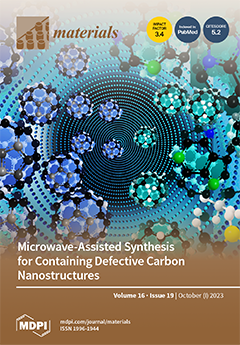Flexible electronic films need to be applied in different ambient temperatures. The porous substrate of the composite film enhances air permeability. The lifespan of these composite films is significantly affected by variations in temperature and substrate porosity. To explore the impact of temperature and porosity on the performance of composite films, we developed a 3D deformation detection system utilizing the advanced three-dimensional digital image correlation (3D-DIC) method. This system enabled us to observe and analyze the 3D deformation behaviors of porous polydimethylsiloxane (PDMS) flexible composite films when they are subjected to uniaxial stretching at different temperatures. We proposed employing two parameters, namely the strain fluctuation coefficient (
M) and off-plane displacement (
w), to characterize the 3D deformation of the films. This holistic characterization of deformation through the combined utilization of parameters M and
w held greater significance for composite films compared to the conventional practice of solely measuring mechanical properties like the elastic modulus. Through experimental analysis, we discovered that as the temperature increased, the
M value of the film decreased while the
w value increased for the same stretching distance. Furthermore, the porosity of the composite film depended on the doping mass ratio of PDMS to deionized water during the fabrication process. Specifically, when the ratio was set at 6:1, the composite film exhibited the smallest
M value and
w value, and the highest air permeability. Additionally, the 3D deformation behavior remained stable across different temperatures for this specific ratio. Moreover, our findings unveiled a remarkable association between the parameter
w and the resistance value of the device. These findings provide valuable insights for optimizing the fabrication process of porous PDMS flexible electronic composite films.
Full article






